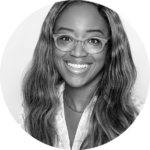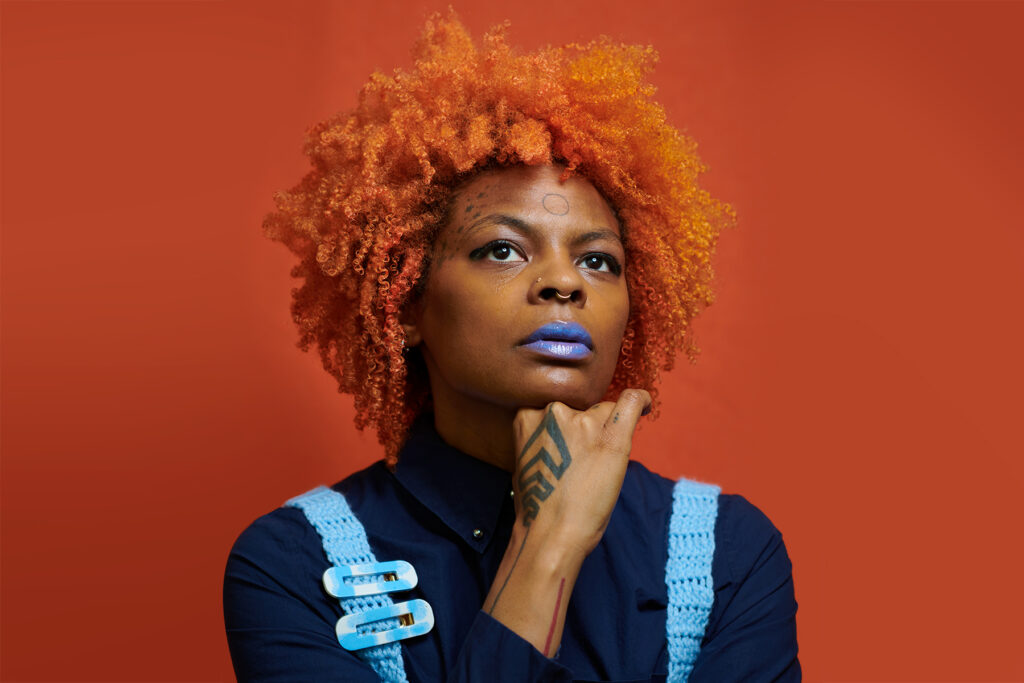Mattie Calloway isn’t just a hairstylist and educator at Beau Bollinger’s Hairstory Studio Dallas; she’s an artist. She bridges the aesthetic gap between Black female professionals who feel the need to adapt to the workplace and those who feel called to express their full selves in the world. And although her artwork isn’t displayed on walls, it signficantly impacts the lives of her clients, who are her living canvases—executives, judges, and more—allowing them to stand out in environments that do not always reflect their lived experiences.
For generations, Black women and girls have adapted their natural hair to fit the Eurocentric beauty standards of straight, silky, fine hair in order to negate microaggressions in the workplace and school. According to a 2016 study by the Perception Institute, one in five Black women feel social pressure to straighten their hair for work—twice as many as White women. The study, inspired by the “Break the Walls” campaign of the natural hair company SheaMoisture, found an implicit bias against natural hair among all participants, regardless of race.
In Dallas, the fight for natural hair acceptance began in 1997 when Isis Brantley, an expert hair braider who had a loyal and sizable clientele that included Erykah Badu, was arrested by two undercover police officers for braiding without a cosmetology license.

The arrest resulted in the closure of her Oak Cliff braiding salon, which in turn led to a brief period of homelessness for Brantley and her children, until a local community leader offered them housing. At the time of her arrest, the curriculum for the cosmetology license included only weaving; it did not include any instruction on natural braiding or hairstyles that require no heat or chemicals to maintain.
Texas updated the law in 2007 to specifically require licensing for hair braiders, meaning practitioners like Brantley would have to pay for and take hundreds of hours of irrelevant courses. So, in 2013, Brantley and the Institute for Justice sued the Texas Department of Licensing and Regulation. In 2015, a federal judge struck down the Texas law as unconstitutional. Later that same year, Gov. Greg Abbott signed House Bill 2717, a law that exempted natural hair braiders from having to hold a cosmetology license to operate.
In October 2020, WFAA Channel 8 anchor and reporter Tashara Parker went viral when she shared a photo of herself doing the weather with her hair in a stylish series of natural buns. The moment ignited conversations about professional hairstyles and hair discrimination in the workplace. “I’m sure many of the rules made up about what’s considered professional—whether at school or at work—weren’t made up by people who look like me,” Parker wrote in an essay for WFAA about her experience. “Yet, for so long, Black people, and certainly Black women, have been forced to shrink themselves and not show up fully in so-called professional settings.”
Whether through the freedom of kinks and curls or with the addition of colorful shades of green, blue, purple, or red, it’s Calloway’s goal to show her clients the power and creativity afforded by hair in its natural state.
“That’s been my journey of working with Black women, from working with her when she is a chameleon in corporate to working with her coming out of corporate when she still wants to be creative but go to work,” she says. “It’s a hybrid Black woman. Now I work with a woman who is fully out of relaxers and help her understand how to relate to her crown.”

The Black Hair Experience
This social media-friendly pop-up in Arlington, which runs through February 20, features more than 15 interactive installations for guests to experience pivotal moments from Black hair culture. From the washing bowl in your mother’s kitchen to bundles of Kanekalon braiding hair to a photo wall of iconic covers from Essence, Ebony, and Hype Hair magazines, the exhibition is a culturally inclusive place for Black women to celebrate their hair in all of its forms: natural, relaxed, bald, and everything in between.
Author




